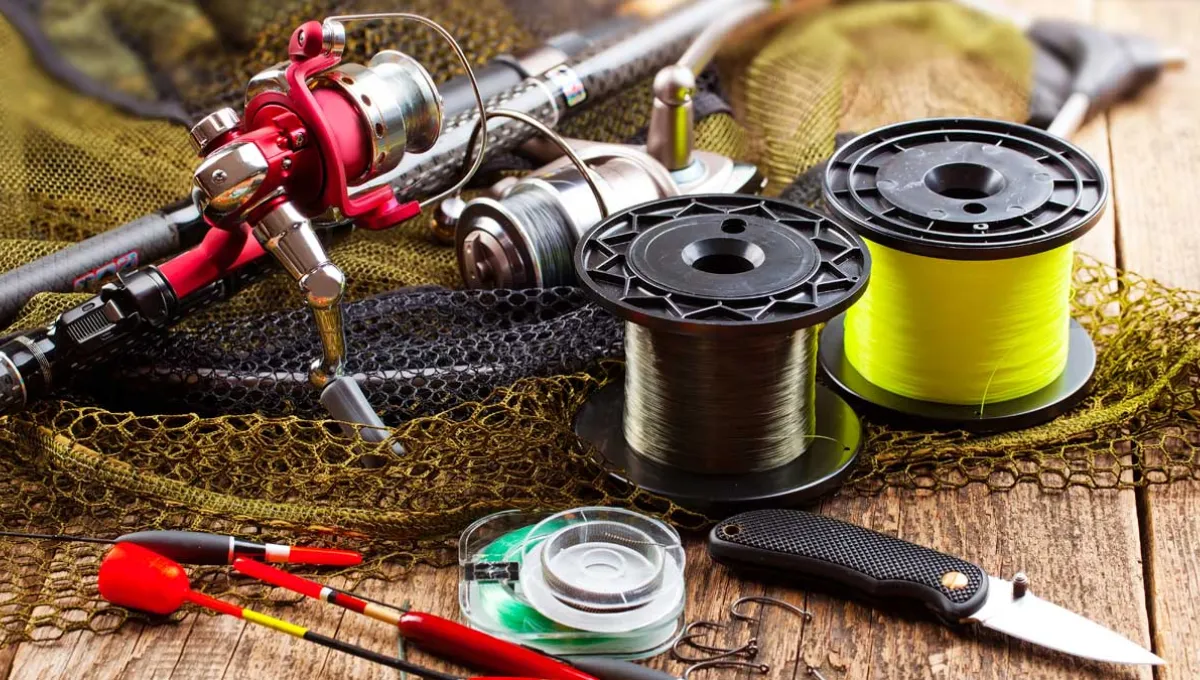

Fishing is a popular recreational activity millions of people worldwide enjoy. Whether you’re a seasoned angler or just starting, choosing the right fishing line is crucial for a successful fishing experience (How To Buy Fishing Line). With so many options available in the market, it can be overwhelming to make a decision. This guide will walk you through the process hing line, providing you with the necessary knowledge to make an informed choice. As a leading company in the fishing industry, United Fish is dedicated to providing high-quality fishing products, including a wide range of fishing lines designed to meet the diverse needs of anglers.
Before diving into the buying process, it’s essential to understand the different types of fishing lines available. Here are the three primary types of fishing lines
Monofilament lines are made of a single strand of nylon or similar material. They are popular among anglers due to their affordability, versatility, and ease of use. Monofilament lines have good knot strength, are relatively abrasion resistant, and provide excellent shock absorption. However, they tend to have higher visibility in the water and can stretch, which may reduce sensitivity.
Fluorocarbon lines are made from a particular type of polymer that closely resembles water’s refractive index, making them nearly invisible underwater. They offer superior strength and abrasion resistance compared to monofilament lines. Fluorocarbon lines also have less stretch, providing enhanced sensitivity to detect even the slightest nibbles. However, they tend to be more expensive than monofilament lines.
Braided lines are composed of multiple strands of synthetic fibres, such as Spectra or Dyneema. They are known for their exceptional strength, minimal stretch, and thin diameter. Braided lines have a high level of sensitivity, allowing anglers to feel even the most subtle bites. However, they are more visible in the water, can be challenging to handle due to their lack of stretch, and may require additional leader material for specific fishing techniques.
Now that you’re familiar with the different types of fishing lines let’s explore the key factors to consider when purchasing fishing line:
The fishing technique you plan to use will largely determine the type of fishing line(How To Buy Fishing Line) you should buy. For example, monofilament or braided lines are suitable choices if you’re casting lures and need good knot strength. Fluorocarbon lines are ideal if you’re fishing in clear water and need invisibility. Consider your fishing style and the target species to make an appropriate selection.
Fishing lines have various strengths, typically measured in pounds (lb). Choosing a line with adequate strength is crucial to handle the size and fighting power of the fish you’re targeting. Lighter strings are suitable for smaller fish and finesse techniques, while heavier lines are needed for larger species and heavy-cover fishing.
The diameter of the fishing line(How To Buy Fishing Line) is an important consideration, as it affects its visibility, casting distance, and strength. Thinner lines offer better sensitivity, improved casting performance, and reduced visibility in the water. However, thicker lines provide increased strength and durability. Strike a balance between these factors based on your fishing requirements.
Fishing lines encounter various underwater obstacles, such as rocks, vegetation, and structure. Opt for lines with good abrasion resistance to withstand these challenges and prevent premature breakage. Fluorocarbon and braided lines generally offer superior abrasion resistance compared to monofilament lines.
Fishing lines are available in different colours, including clear, green, blue, and high-visibility colours like yellow or red. Consider the water conditions and visibility when choosing a line(How To Buy Fishing Line) colour. Clear lines work well in clear water, while green lines blend in with aquatic vegetation. High-visibility lines help track line movement and detect subtle strikes.
Fishing lines(How To Buy Fishing Line) come in a wide price range. Set a budget based on your needs and preferences. While premium tubes may offer enhanced features, there are also budget-friendly options that provide satisfactory performance.
Now that you understand the factors to consider when buying fishing line let’s explore specific fishing scenarios and the recommended lines for each:
For general freshwater fishing, monofilament lines are a popular choice for freshwater fishing(How To Buy Fishing Line). They offer versatility, good knot strength, and affordability. However, fluorocarbon lines are a better option if you’re targeting finicky fish or fishing in clear water due to their invisibility and increased sensitivity.
Saltwater fishing requires lines that can withstand the corrosive nature of saltwater and handle larger, hard-fighting fish(How To Buy Fishing Line). Braided lines are excellent for saltwater angling, as they offer high strength, minimal stretch, and superior durability. Combine a braided line with a fluorocarbon or monofilament leader for stealth and shock absorption.
Fly fishing requires specialized lines(How To Buy Fishing Line) for delicate presentations and accurate casting. Fly lines are available in different weights and tapers, with specific options for other fishing conditions and target species. Consult with experts or fly fishing guides to determine the appropriate fly line for your needs.
Ice fishing demands lines that remain supple in freezing temperatures and provide good sensitivity for detecting subtle bites. Monofilament lines with low memory are commonly used for ice fishing(How To Buy Fishing Line) due to their affordability and ability to handle cold conditions.
Once you’ve purchased your fishing line(How To Buy Fishing Line), it’s crucial to maintain and store it properly for optimal performance and longevity. Here are some tips to consider:
Rinse the line with fresh water after each fishing trip to remove salt, dirt, and debris.
Avoid exposing the line to prolonged sunlight, as it can weaken the material over time.
Inspect the line regularly for signs of wear, such as nicks, fraying, or discoloration. Replace the cable if any damage is detected.
Store fishing lines in a cool, dry place away from direct sunlight and extreme temperatures.
Choosing the right fishing line(How To Buy Fishing Line) is crucial for maximizing your fishing success. You can select a fishing line that suits your needs by considering factors such as fishing technique, line strength, diameter, abrasion resistance, and colour. United Fish, a reputable fishing company, offers a diverse range of fishing lines designed to meet the requirements of anglers worldwide. Remember to maintain and store your fishing lines properly to ensure their longevity. With the right fishing line, you’ll be well-equipped to embark on your angling adventures and enjoy the thrill of reeling in the big catch.

A Look at Dubai Mall’s Most Talked-About Dining Spots in 2025

A Look at Dubai Mall’s Most Talked-About Dining Spots in 2025

The Confluence of Culinary Excellence and Casino Trends in the UAE


The Benefits of Hiring a Professional Clown for Children’s Parties


Near-Expiry Pantry & Sweets in Dubai: Big Savings on Everyday Essentials

كيف يمكنني اللعب في كازينو اون لاين بأمان؟

Ford Raptor 2025 in the UAE: Pricing, Power, and Desert Ready Capability

Behind Every Online Food Order in Dubai Is a Strong IT Support

A Look at Dubai Mall’s Most Talked-About Dining Spots in 2025

A Look at Dubai Mall’s Most Talked-About Dining Spots in 2025

The Confluence of Culinary Excellence and Casino Trends in the UAE